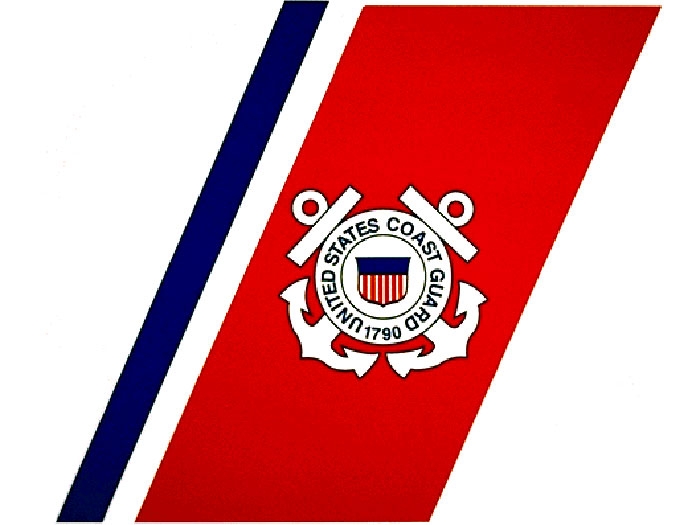
USCG gives update on BWMS type approval program
Written by Nick Blenkey
In a post on its Maritime Commons blog, the U.S. Coast Guard yesterday gave an update on its Ballast Water Management System type approval program, and guidance on several specific issues on which it receives regular inquiries. In a post on its Maritime Commons blog, the U.S. Coast Guard yesterday gave an update on its Ballast Water Management System type approval program, and guidance on several specific issues on which it receives regular inquiries.
The post notes that, in September, Lt. Jacob Baldassini, an engineer with the Coast Guard’s Marine Safety Center, gave a presentation at the Ballast Water Management Tech North America Conference in Fort Lauderdale, Fla.
According to Baldassini, there are 58 ballast water management systems on the Marine Safety Center’s Letter of Intent Register. Of those, 47 have completed their readiness evaluation, and 30 have submitted applications. MSC has now issued 21 type approval certificates, over double the number that had been approved at the same time last year. Additionally, MSC processed over 90 equivalency requests.
Application Processing
Once MSC receives a complete application, there are eight areas that are considered during the type approval application process: design and construction; engineering; the Operation, Maintenance and Safety Manual (OMSM); the Independent Lab Test Report; land-based testing; shipboard testing; component testing; and scaling. Baldassini said MSC’s goal is to provide the applicant with initial comments for each of the eight areas within 30 days of receiving the application. These initial comments may consist of questions, requests for clarification, or a simple “nothing required.” Subsequent responses by the Independent Laboratory are replied to within the same timeline, until all issues are resolved and the type approval certificate can be issued.
“There is no set timeline for issuing a type approval certificate,” Baldassini reminded conference attendees. “The type approval timeline begins once MSC receives a complete application, as defined in the regulations, and the process takes as long as is necessary to ensure the system meets all federal requirements.”
Baldassini then offered insight into several BWMS issues to help clarify for industry the type approval process and requirements.
Flow Rates – Each certificate for a system that treats on intake states the capacity in m3/h. This capacity is the theoretical maximum that the system could achieve in optimal conditions. Real-world conditions may require the system to automatically adjust to operate at a lower flow rate.
OMSM (Operation, Maintenance, and Safety Manual) – A common question asked of MSC is, “If I have this manufacturer’s system, can I operate it in this manner?” Baldassini said every version of each type approval certificate states the specific version of the OMSM tied to that approval. The system must be operated in accordance with the listed version of the OMSM.
Nameplates – Each certificate also states, “The BWMS must be marked in accordance with 46 CFR 162.060-22.” This regulation describes the plate that the manufacturer affixes to the BWMS, which specifies the approval number associated with the installed BWMS. A legacy Alternative Management System design will differ from the type approved version of a system, and manufacturers will need to re-manufacture installed systems to bring them into compliance. Similarly, type approved systems that have their certificates amended will also need to be re-manufactured by the manufacturer if the vessel owner wants their system to meet the conditions of the amended approval. The approval number on the plate will reference a specific version of the certificate, which lists the applicable version of the OMSM.
Hold Times – Hold times are part of the performance claim identified by the manufacturer. The Independent Lab develops an appropriate test plan and then assesses the system in a test report in accordance with 46 CFR 162.060-34(a)(4)(iv). The Coast Guard reviews the test report and either requests additional information as necessary or amends the certificate to restate performance claim.
Test Water Quantities – MSC routinely receives equivalency requests and general questions about test and control water quantities. Baldassini outlined how the Coast Guard characterizes requests on such issues. Recently, OES issued policy letter 02-19 that provides this information.
Alternate Components – To provide more options to their customers, system manufacturers look to include alternate components in their bills of materials. However, for initial type approval, systems typically are tested with only the primary components. To approve the use of an alternate component, Independent Laboratories must first evaluate the impact of the component on the system’s efficacy. Based on that assessment, the IL conducts empirical testing (if necessary), component testing (if applicable), and reviews appropriate updates to the system’s OMSM. When complete, the IL then performs a holistic assessment of the altered system, to ensure there is no negative impact on the system’s efficacy, and submits a report to the Coast Guard to request approval of the alternate component.
“MSC will continue to provide new guidance to address the changing needs of the ballast water management system industry as it moves from an introduction phase to a growth phase,” said Baldassini.
For all BWMS type approval questions, except questions related to Independent Laboratory requirements and acceptance, visit the MSC’s ballast water management website or contact them at (202) 795-6760 or msc@uscg.mil.
For Independent Laboratory requirements, contact Ms. Roshanak Aryan-Nejad with the Coast Guard Headquarters Environmental Standards Division, at Roshanak.Aryan-Nejad@uscg.mil.




